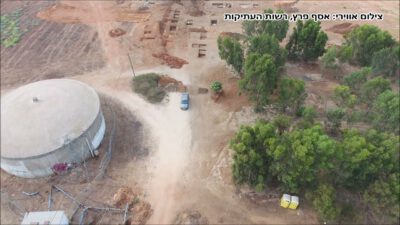 Polio, a crippling virus which lingers in polluted water sources is not a dead virus, says an Israeli researcher. It is in Israel, Gaza and Egypt. But some current vaccines may be deadly.
Polio, a crippling virus which lingers in polluted water sources is not a dead virus, says an Israeli researcher. It is in Israel, Gaza and Egypt. But some current vaccines may be deadly.
I know women in Israel who were unsure about vaccinating their kids against polio. The nurse practitioners there said that polio is still “alive” in northern Israel. Getting a vaccine is very recommended. But new research by Tel Aviv University which warns about avoiding the “live” version of the vaccine, questions what kind of vaccine should be given to prevent the crippling disease which 60 years ago affected one of my husband’s family members.
The research done by Dr. Lester Shulman of Tel Aviv University’s Sackler Faculty of Medicine and the Israeli Ministry of Health spent years tracking isolated cases of live poliovirus infections, often discovered in countries that are supposedly polio-free, he reports. When the live-virus version of the vaccine, called Oral Polio Vaccine (OPV) evolves, he says, it can act like wild poliovirus and continue the threat of contagion.
(Here is a story of an Arab Gulf man who suffers from Polio, riding a solar golf cart).
While health professionals and researchers across the globe believe they are on the verge of eradicating polio, this devastating virus can still lead to paralysis and death.
Despite successful eradication in most countries, there are still four countries where the virus is considered endemic — and many more in which the virus still lurks. Medical professionals widely believe that after the wild virus is eradicated, resources dedicated to polio immunization can be redirected.
But this isn’t so, Dr. Shulman says.
He recommends that public health agencies take a three-pronged approach:
Vaccination policies to maintain “herd immunity”(at least 95%)
Environmental surveillance of sewage systems should continue
A switch to Inactivated Polio Vaccine (IPV) instead of OPV should be implemented.
Dr. Shulman’s research was recently published in PLoS ONE. He has also been invited as an informal expert to the World Health Organization’s annual meeting on polio this fall.
Israel is among the few countries that practice environmental surveillance for polio, beginning in 1989. It is known to still exist in Israel. Checking designated sites along sewage systems every month for evidence of the virus allows for early detection before there are paralytic cases. For the past decade, the researchers have been trying to trace the origin of the strain that infected two individuals in Central Israel.
They tracked the strains to the sewage system, and have been working to pinpoint the origin. Fortunately, because Israel maintains herd immunity for the disease, the wider population has not been threatened.
From Gaza to Egypt
Dr. Shulman says that in the lab, each strain of the virus can be identified from its genomic structure and traced back to the region from which it originated.
“From the sequence of the genome, you can match it with known sequences reported by labs throughout the world,” he explains. For example, he and his colleagues traced a wild poliovirus discovered in sewage from the Gaza District to a village in Egypt.
New hope for curing persistent infections
Convinced by the efficacy of Israel’s environmental surveillance program, many other countries are starting to develop tracking programs of their own. As a result, they are finding evidence of vaccine-derived polio cases in humans.
Paradoxically, Dr. Shulman sees a beacon of hope in these discoveries. As labs across the world report more cases, researchers gain a better understanding of how polioviruses establish persistent infections and can then develop effective measures to eliminate them.
The fellow researchers are now working to develop compounds that can effectively fight these rare cases of persistent poliovirus infections. So far, they have seen promising results, noting that the mutants strains have not become resistant to the drugs under investigation.
But for now, Dr. Shulman recommends that health authorities continue immunization using inactivated vaccines (IPV) to keep their populations safe.
Image via coda



I had my children vaccinated with the inactive polio vaccine – used to be called “dead polio.” But it was hard to find, and hard to convince the authorities that we would not accept the live vaccine. In the end, we bought it privately and had it administered privately.